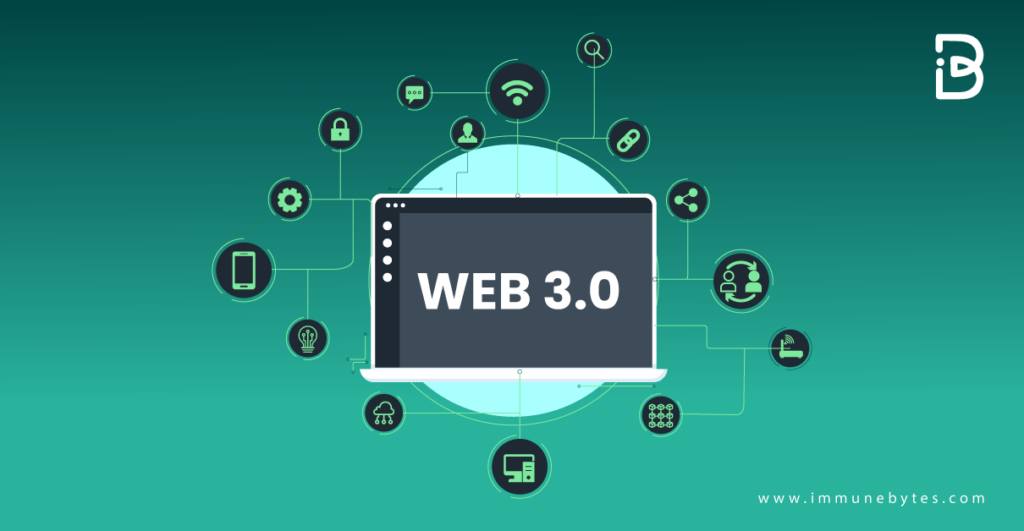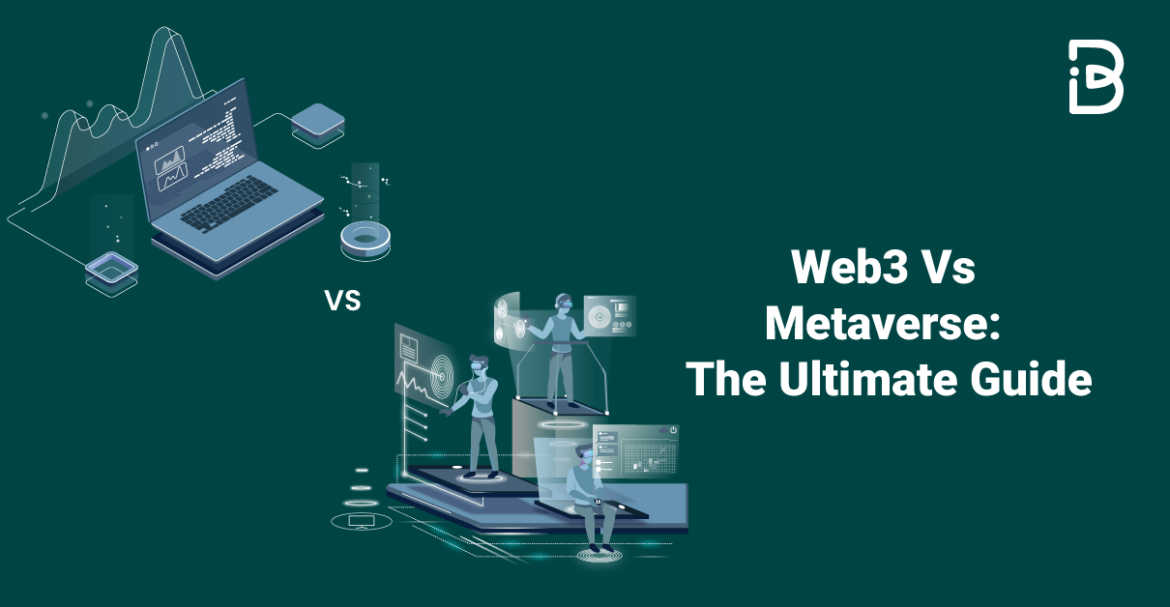Introduction
Table of Contents
Metaverse and Web 3.0, the two most starring words in the information technology domain, are often used interchangeably. Although, there exists a vast ocean of gray areas, mainly due to blockchain technology playing an overlapping role between the two.
Web3.0 and metaverse are integral to the ?Internet of the Future.? Furthermore, these ideas would have a huge and lasting effect on the future of digital connectivity. Therefore, it is essential to consider the variations and implications for the transition of the tech universe. It turns out that despite certain similarities between Metaverse and Web3, they both represent distinct methodologies.
This blog will discuss the differences and similarities between the Metaverse and Web3.0. Let’s first start with the basics.
What is Web3.0?

Web3.0 is the decentralized network built over the blockchain technologies that users experience in the form of DAO, DApp, DeFi, and more.
It aims to overcome some of the primary drawbacks and flaws of the current internet era by tackling the crucial concerns of data ownership and control.
Web 3.0 encompasses artificial intelligence (AI) and machine learning to enable smarter and more adaptive applications.
Semantic Web, blockchain, artificial intelligence, and machine learning are at the heart of Web 3.0 and can potentially expand applications in new domains and enhance user interaction significantly.
What is Metaverse?
Metaverse is the 3D digital simulation of almost every facet of the real world. It is similar to a virtual world where users can interact with each other, applications, and services in a more immersive way. Similar to how the internet connects multiple websites that can be visited using a single browser, the metaverse aims to link various platforms.
Before delving deeper into Metaverse and Web 3.0, it is imperative to understand the world of blockchain technology, which is a major binding force between the two.
Blockchain is a distributed ledger that holds digital data in order to create a secure, decentralized database.
In contrast to conventional methods, blockchain does not require a middleman or centralized control network. As a result, the data may be trusted because the specific blockchain protocol participants confirm all transactions.
Decentralization lies at the heart of Web3.0 deployed via blockchain, also used in the metaverse space as an irrevocable component.
The third generation of the web’s networks features censorship-resistant P2P data file storage, interoperability, smart contracts automation, and seamless integration. This makes it quite evident that blockchain would act as a significant engine for the coming internet. It is essential to alter the traditional methods for managing and storing data.
Recommend Read: Metaverse Cybersecurity
Similarities Between Metaverse and Web 3.0
Before looking for features that drift Metaverse away from Web 3.0, let’s analyze the similarities between the two.
Firstly, Metaverse and web3.0 are in the developmental stage, and the entities working on their development have their own perspectives.
For example, large organizations like Apple, Facebook, Microsoft, etc., are working to develop their metaverse platform. While many believe there is no role for a large organization taking over Metaverse and it should be completely decentralized.
Secondly, Both these terms encompass the subsequent interaction of the internet and are hence hard to distinguish.
Thirdly, Blockchain and NFTs, The technology behind web3, including blockchain, blockchain-based currencies like Bitcoin and Ethereum, and NFTs, which are one-of-a-kind digital “objects” stored on a blockchain have significant implications for how we use the Metaverse’s virtual worlds for work, play, socializing, and education.
Now that we know there exists a relationship between Metaverse and web 3.0, let us look at the features that make them separate entities.
Differences Between Metaverse and Web 3.0
The Metaverse is mainly concerned with how users will engage with Web3.0 than Web 2.0, which is focused on who will reign and manage the future internet. Web3.0 seeks to create a semantic web, giving users control over their online information.
The underlying technologies behind Web 3.0 are blockchain, cryptos, DApps, Defi, DAO, and more. While virtual reality and augmented reality, human interfaces, experiences, creator economy, and more form the underlying basis for the Metaverse.
While Web3.0 is applicable throughout the web, the use cases of Metaverse are still developing into diverse domains. Actually, the “engine” behind Web 3.0 makes use of blockchain-related advancements. In this context, the term “Metaverse” refers to a new dimension that combines Web 3.0 technologies with “games, film, concerts, entertainment, social platforms, education, and simulation-based training” methods.
There will still be many things on the web that are not part of the Metaverse but are still part of Web 3. Nobody is certain to what extent different industries will be included in the Metaverse concept, but a significant portion of the Web 2.0 concept will inevitably evolve into the Web 3.0 concept.
You can interact with 3D characters, things, and locations in the Metaverse. For instance, you and your friends can play games on the creator’s property. With Web3, individuals may create, own, sell, and buy their own content, and users can also charge for their creations.
Is Web3.0 the future?
With the increasing adoption of blockchain technology, which is the basis for the third iteration of the internet, it is pretty evident that Web3.0 is the future.
Web 3.0 will replace centralized servers with data stored on several computing devices, behaving more like a peer-to-peer internet with no central authority. Examples of Web 3.0 can demonstrate how data would be connected in a decentralized fashion and how people and machines would be able to interact with the data. The third-generation web would be supported primarily by the semantic web and artificial intelligence simultaneously.
Mapping Up
Nowadays, a sizable portion of the population uses computer systems, smartphones, and tablets to access apps and surf websites. According to proponents of the Metaverse, we will use Virtual Reality (VR) technology to access the internet in the future and travel between virtual worlds using digital avatars.
Web3.0 and Metaverse have been around space for some time now but are still at the nascent stages of their development cycle. With the growing curve of their advances, there are probably many more surprises left for us to see in the world of Web3.0 and the Metaverse.

